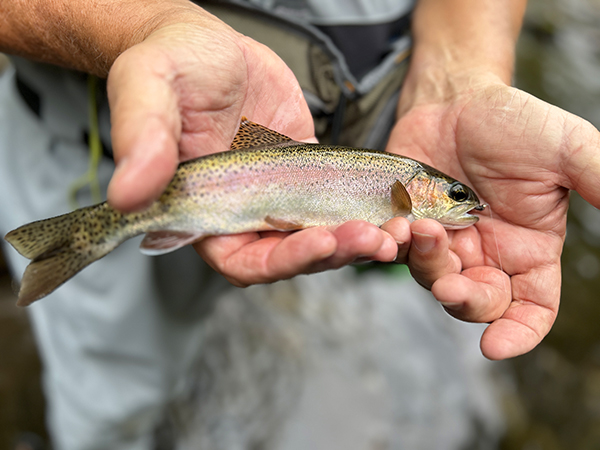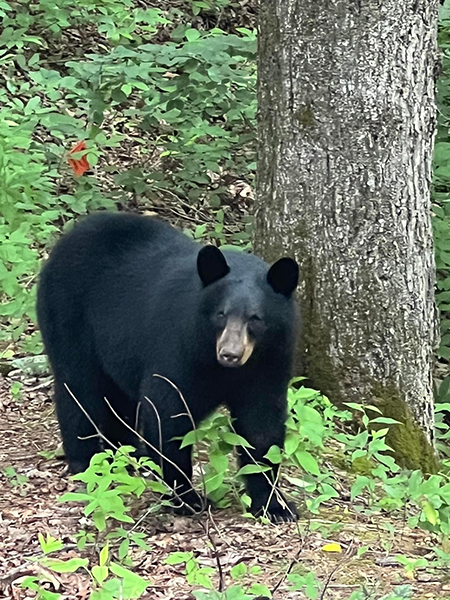The Smoky Mountains managed to miss out on the extreme heat experienced by so much of the nation this summer, but fall has certainly arrived. This past week the tops of the Smokies received the first frost of the season and we’ve even had one wake up temperature of 39 on our porch in Townsend. Water temperatures have fallen way down into the 50’s and the foliage is definitely changing colors
We were wet wading up until last week, but pulled the waders out this week. Next week we’ll see some daytime highs only in the 50’s so it’s very likely we’ll see water temperatures down in the 40’s. Even so, water levels are very low right now. We’ve had a few brief sprinkles over the past week with some light rain in the forecast, but not enough to really bring stream flows up dramatically.
October is typically the time of year with the lowest average flows since this month along with September are our driest weeks of the year. Streams are very low in spite of a relatively wet summer. Last month was among the driest on record. We didn’t expect to have water levels like this because we experienced record high flows in August.
The main thing to keep in mind when fishing right now is it is incredibly hard to sneak up on the fish. Wild trout in the Smokies are already among the most cautious fish we’ve ever cast to anywhere. This only makes things more difficult, so try to work around this situation. Skip past long, flat pools with a slick surface. Oftentimes trout in these spots will be aware of you before you even cast a fly to them. Pocket water and riffles will be far more productive.
Even though water temperatures are dropping fast, try to stick with dry flies as much as possible. Nymphs may be a necessity to catch fish, but avoid large strike indicators. Nymphs should be lightly weighted too. Any plop on the water is too much. There are very few deep spots right now so your nymph or dry fly are pretty close to a fish. Trout on the bottom are actually pretty close to the surface when the water is this low. Very little weight is necessary for a fly to sink in such shallow water.
Mornings are certainly fishing slower than afternoons right now and that pattern will likely continue. Fishing in the morning is far from pointless, but both insects and trout will become more active as the sun rises in the sky.


